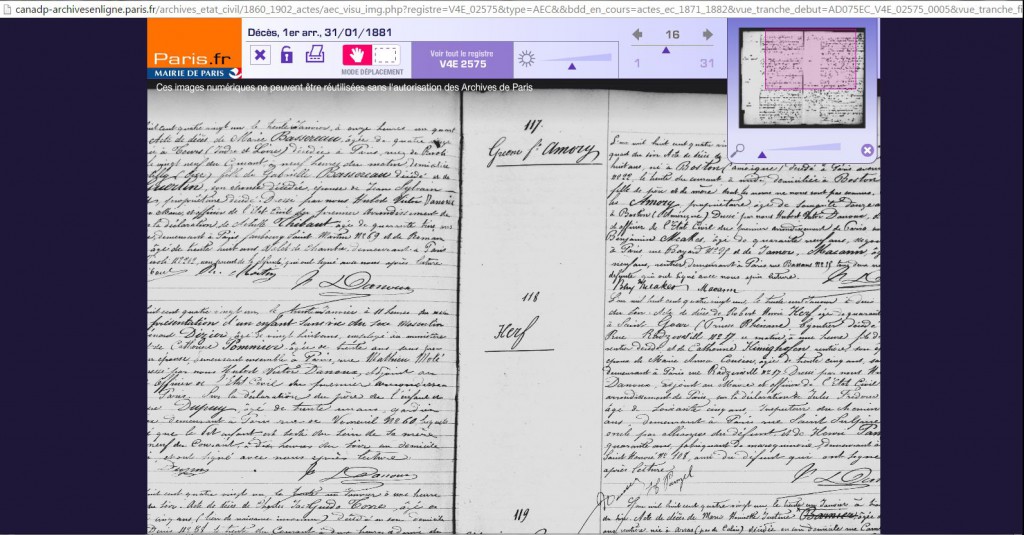 The name Martha Babcock Greene Amory might not immediately resonate, but the lives of her immediate forebears are well-known to us today. She was born in Boston 15 November 1812, the daughter of Gardiner Greene and his third wife, Elizabeth Clarke Copley. Mrs. Greene was the daughter of John Singleton Copley, the well-known American painter, and his wife Susannah Farnum Clarke; she was the granddaughter of Richard Clarke, whose consignment of tea was thrown into the harbor during the Boston Tea Party. That’s a lot of history for just a couple of generations! Continue reading The lady vanishes
The name Martha Babcock Greene Amory might not immediately resonate, but the lives of her immediate forebears are well-known to us today. She was born in Boston 15 November 1812, the daughter of Gardiner Greene and his third wife, Elizabeth Clarke Copley. Mrs. Greene was the daughter of John Singleton Copley, the well-known American painter, and his wife Susannah Farnum Clarke; she was the granddaughter of Richard Clarke, whose consignment of tea was thrown into the harbor during the Boston Tea Party. That’s a lot of history for just a couple of generations! Continue reading The lady vanishes
All posts by Rhonda McClure
Northeastern University’s roots
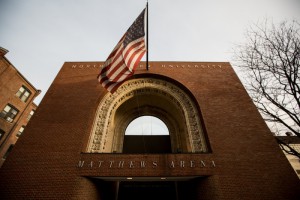
Genealogy is the never-ending story of your ancestors as you track them down and learn about the lives they lived. It is also the opportunity to learn about the communities in which they resided. Recently, I had the opportunity to learn a little bit more about the place I now reside and about a university that I visit a lot from October to March, spending many weekend evenings in Matthews Arena, the oldest indoor ice hockey arena still in use for the sport. Continue reading Northeastern University’s roots
Hockey and Canada, 1914-18
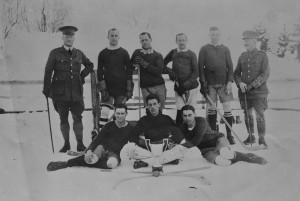
There is one thing that many people know about me, and that is that when I am not busily researching family trees and helping patrons here at the New England Historic Genealogical Society’s research center, the odds are pretty good that I am off somewhere watching hockey or studying its history. In fact, I just returned from a trip to Montréal to see the Montréal Canadiens beat the Boston Bruins. Had I known then of the exhibit currently on display at the Library and Archives Canada in Ottawa, I might have headed west, once I crossed the border, instead of going on to Montréal. However, it wasn’t until I had returned and was finalizing some pieces for a webinar that I saw the item on the website of the Library and Archives Canada (LAC). Continue reading Hockey and Canada, 1914-18
Immigration of the Slapshot
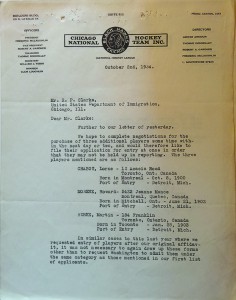
While my personal ancestry does not have anyone who immigrated later than the 1700s, I have long been intrigued by the experiences of those who came in the latter 1800s and the early 1900s, such a time of concern about the influx of immigrants and what they might do to the country. Over the years I have acquired many published volumes and hundreds of digitized documents about immigrants and the immigration process. I am the only person I know who actually owns E. P. Hutchinson’s Legislative History of American Immigration Policy, 1798-1965, published in 1981.
Among the many laws that have been enacted since the first major immigration act in 1882 is the Alien Contract Labor Law of 1885, which was amended in 1887. This law specified that immigrants to the United States needed to show that they were capable of working, but they could not already have a job lined up. Some immigrants were exempt from this rule, including actors, artists, singers, domestic or personal servants, and skilled laborers—provided that no one else with their skills lived in the United States. In Massachusetts, for instance, mills could import seamstresses who did intricate and specialized embroidery because they could not find anyone in the United States who possessed that skill. In viewing case files of individuals deported upon arrival or later, I have come across many that invoked this law. Continue reading Immigration of the Slapshot
Becoming American: A Look at the Process
The National Archives’ Records of the Immigration and Naturalization Service—which many genealogists informally call “Record Group 85”—is one of the best sources of data on immigrants to America, covering the years 1787 to 1993. It’s a common misperception that Record Group 85 contains only passenger lists, which are now viewable online through many sites. However, this record group contains hundreds of case files of immigrants either trying to come into the United States or trying to stay in the country. Also hiding in this series are documents that introduce us to what immigrants were expected to learn about their adopted country in different periods. Continue reading Becoming American: A Look at the Process
Dowry versus Dower Right

Family historians use a variety of records, some of which require some understanding of legal terms. And when it comes to land records, one term that is very often misunderstood is dower. Many look at that word and think of dowery. While both terms have to do with women, marriage, and property, they have different meanings. Continue reading Dowry versus Dower Right
Oaths in early New England
 I was recently asked the difference between the Freeman’s Oath, the Oath of Allegiance, and the Oath of Fidelity in Massachusetts Bay Colony. The history of oaths in the American Colonies actually requires the researcher to go back to the early 1600s under King James I (1603–1625). After all, those who were living in the colonies during the seventeenth century were all British subjects. Continue reading Oaths in early New England
I was recently asked the difference between the Freeman’s Oath, the Oath of Allegiance, and the Oath of Fidelity in Massachusetts Bay Colony. The history of oaths in the American Colonies actually requires the researcher to go back to the early 1600s under King James I (1603–1625). After all, those who were living in the colonies during the seventeenth century were all British subjects. Continue reading Oaths in early New England
World wide Italian immigration

When we think about Italian immigration here at NEHGS, it is often because the patron we are helping is looking for ancestors who arrived here in the late 1800s or early 1900s. However, Italians immigrated to many different countries, including other European countries as well as countries in South America and other continents such as Australia. Continue reading World wide Italian immigration
What’s that name?
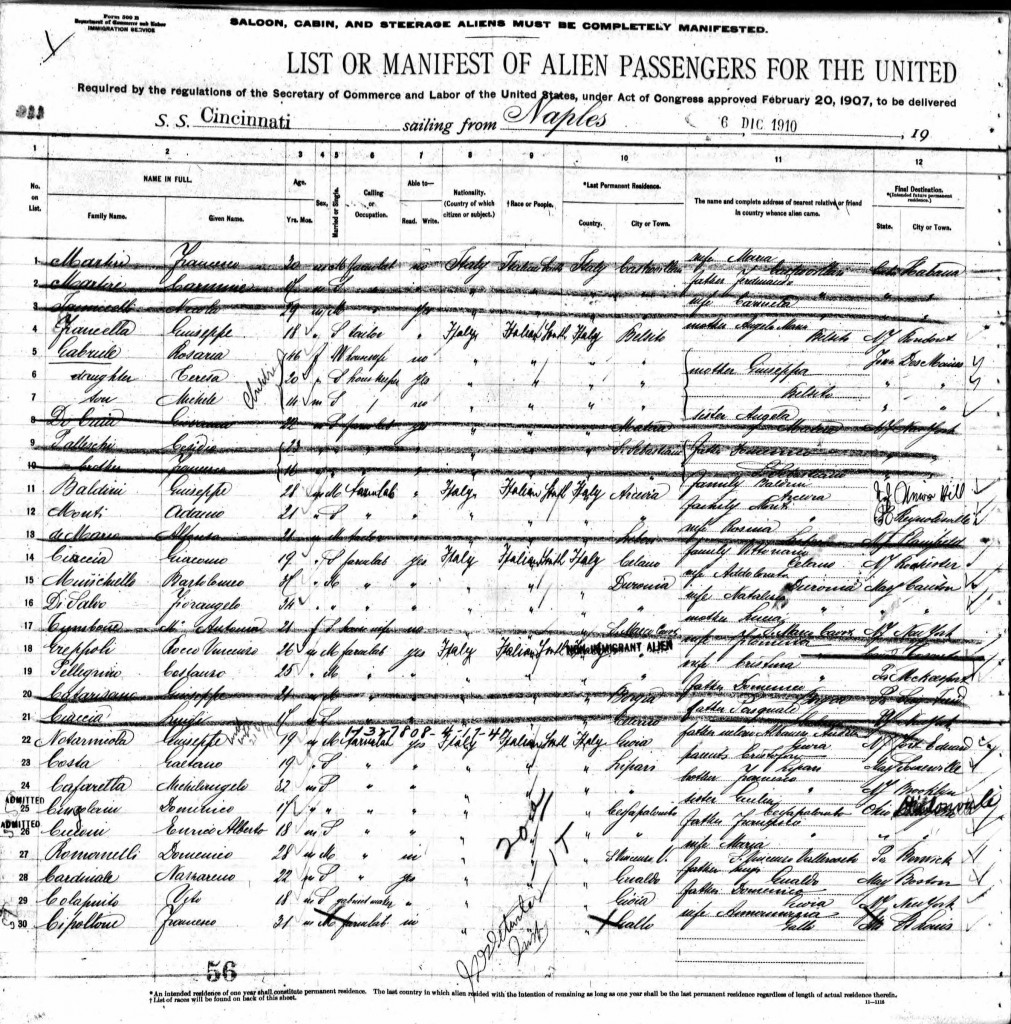
I just returned from representing the New England Historic Genealogical Society at the Southern California Genealogical Jamboree’s forty-fifth annual event in Burbank, California. In addition to getting the opportunity to meet some of the great NEHGS members who live in and around California, I also had an opportunity to give three different lectures: “Following the Crumbs: Tracing Family History Through Land Records,” “Tracing Your Italian Ancestry to the Old Country,” and “Tales of a Genealogist” at the NEHGS Breakfast. Continue reading What’s that name?
Canadian colonization companies: an introduction
One of the best things about working on the reference desk at the New England Historic Genealogical Society is that each new patron brings new challenges. Often new discoveries come with these challenges that I can use down the road to assist another patron. Such an event happened recently. (Click on the images to expand them.) Continue reading Canadian colonization companies: an introduction
